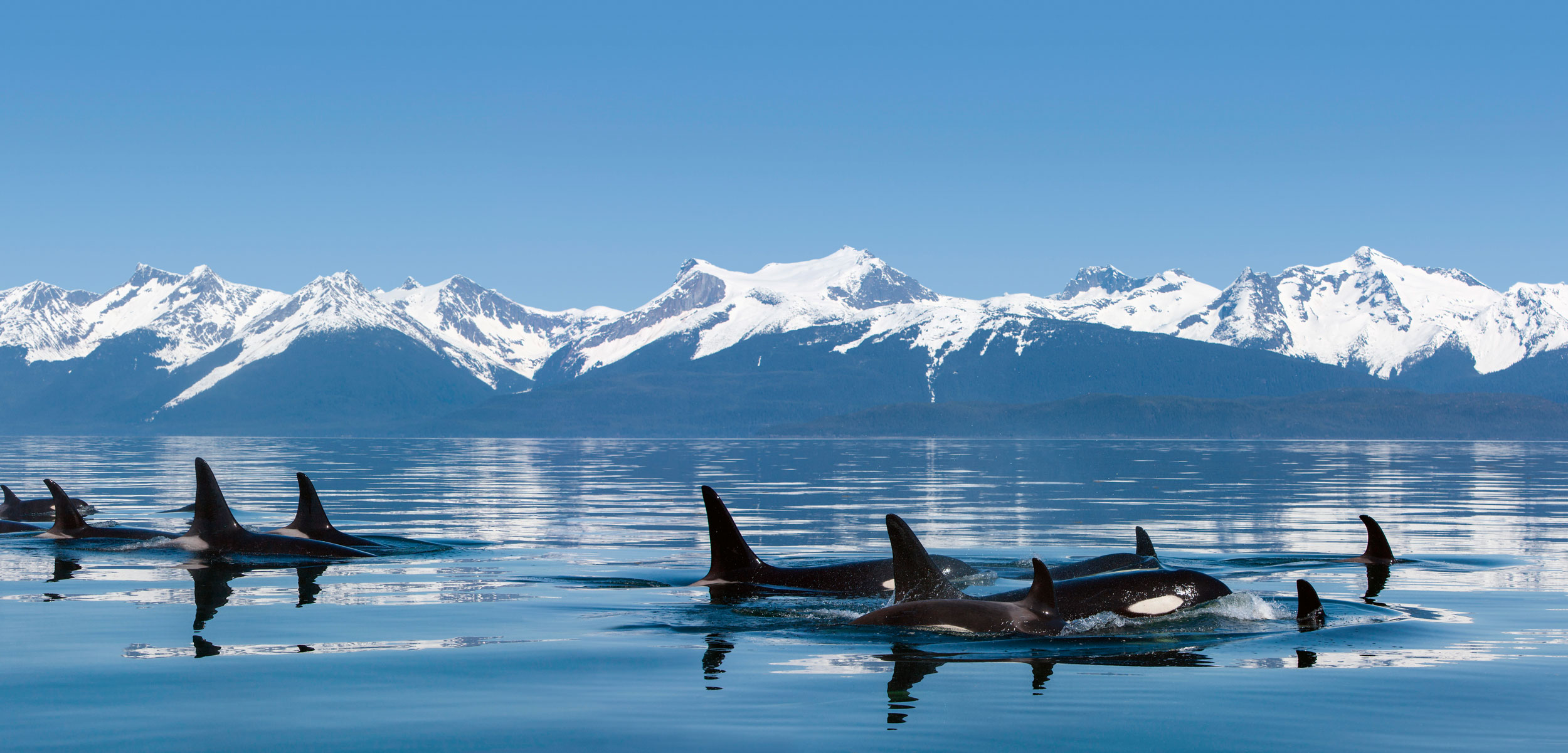The Alaskans Are Coming
Underwater recordings confirm that a new killer whale population is poking its head into British Columbia.
Article body copy
Tortured seas and lashing rains can make the exposed west coast of Haida Gwaii, off northwestern British Columbia, an unforgiving place for marine researchers. But a lone hydrophone resting near the ocean floor can safely collect data around the clock in any type of weather. That’s exactly what happened off southwestern Haida Gwaii, where a hydrophone planted 743 meters deep recorded the calls of Alaska killer whales.
Alaska killer whales have previously only been recorded once on the British Columbia coast—also off western Haida Gwaii—on May 2, 2003. “We didn’t know what to make of that initial encounter,” says John Ford, a whale researcher emeritus with Fisheries and Oceans Canada and lead author of a new study in collaboration with Parks Canada. “Was it just a fluke?”
Four new recordings captured from April 30 to June 4, 2018, show that it was not.
Ford, an authority on killer whale vocalizations who published his groundbreaking doctoral thesis on the subject in 1984, says that the Alaska killer whales were identified by analyzing their calls. “It requires an understanding of the different dialects, and there’s only a few folks who have a trained ear in that respect,” he says.
“It’s pretty exciting to hear their sounds,” says Ford.
Alaska resident killer whales (top) were recently recorded off Haida Gwaii in British Columbia. This territory is also home to the northern resident killer whales (bottom). Audio courtesy of Gwaii Haanas and John Ford
Alaska waters are only about 50 kilometers off the northern tip of Haida Gwaii.
Canada currently recognizes four killer whale populations on its Pacific coast: salmon-eating southern residents; northern residents, which also eat salmon; transients, or Bigg’s killer whales, which eat marine mammals such as harbor seals and sea lions; and offshores, which are shark-eating specialists. The southern residents are endangered, while the others are threatened.
The latest recordings, made within the Gwaii Haanas National Park Reserve, National Marine Conservation Area Reserve, and Haida Heritage Site, have researchers wondering whether Alaska killer whales routinely visit the area, perhaps in spring. British Columbia’s northern resident killer whales frequent the northern reaches of the Haida Gwaii archipelago, especially from February to June. The northern residents are also known to border hop, making forays into Alaska territory.
The two Alaska resident pods detected in Ford’s study total about 100 animals. These pods are healthy, and are increasing their numbers by about three percent annually.
Craig Matkin, executive director of the North Gulf Oceanic Society in Alaska, says the two pods are widely traveled. Their territories span from Kodiak Island, Alaska, south to Frederick Sound—and now beyond that into Canadian waters. “We’re talking about 1,200 to 1,300 miles [1,930 to 2,100 kilometers] of range,” Matkin says. “An interesting bunch of whales covering a huge distance.”
Lynn Lee, a marine biologist with Gwaii Haanas, but not a study participant, says the “west coast is so remote that the likelihood of actually seeing these animals at any time is pretty low.”
Lee says the same hydrophone that detected the Alaska killer whales is also gathering baseline information on underwater vessel sounds. “Before any increase in shipping, we want to get some idea of the noises out there,” she says. In recent years, there have been several proposals for liquefied natural gas export facilities, in northern British Columbia and southeastern Alaska, that would increase vessel traffic in the region.
Ford is hopeful that with increased data from hydrophones around Haida Gwaii, researchers can determine how frequently the Alaskans are visiting Canadian waters. If they are regular visitors, the Committee on the Status of Endangered Wildlife in Canada may need to recognize them as a new population and assess their conservation status.

